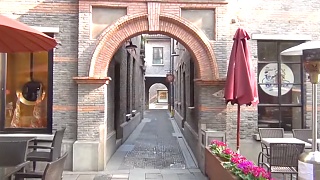Unconditional love, trauma, flow (being in the moment), the ego, and more ...
[640],shadow=true,start=,stop=Related Videos
Featured Videos

|

|
The low-down on the Chinese writing system.
Great videos ...
See - it's very easy really ;)
|

|
|

|
With Mo Gawdat and Rangan Chatterjee ...
|

|
With KSquared ...
Bonus films - taking a look at Chinese electric vehicles (EVs) ...
|

|
With Lincoln's Travel ...
|

|
Cafe culture, boutiques, galleries ...
|
 Life Wisdom – Jason Silva (psychology)
Life Wisdom – Jason Silva (psychology)






